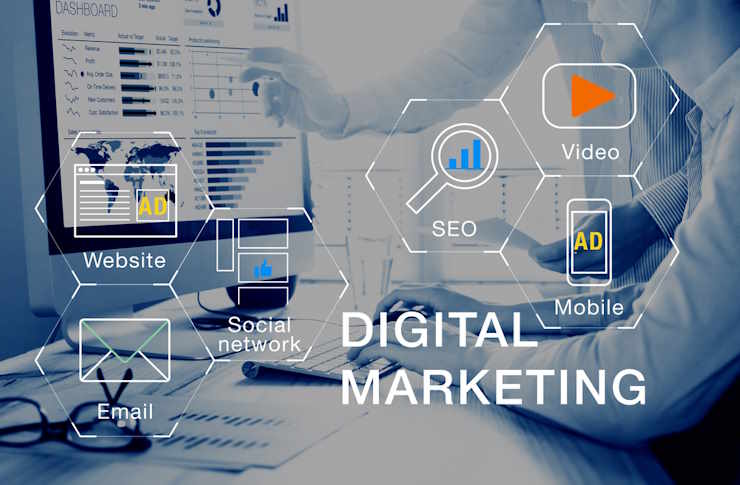A Comprehensive Guide to Maximizing Email Marketing in 2025
Email marketing remains one of the most powerful tools for businesses to connect with new customers and drive conversions. With billions of people checking their inboxes daily, a well-crafted email strategy can deliver impressive returns on investment while building lasting relationships with your audience. Understanding the fundamentals and implementing proven techniques will set your campaigns apart in an increasingly competitive digital landscape.

In today’s digital ecosystem, email marketing continues to evolve as a cornerstone of customer acquisition and retention strategies. While social media platforms come and go, email provides a direct line of communication to potential customers who have expressed interest in your brand. The key to success lies in understanding your audience, crafting compelling messages, and continuously optimizing your approach based on data-driven insights.
What Makes Email Marketing Essential for Attracting New Customers
Email marketing offers unparalleled advantages when it comes to reaching new audiences. Unlike paid advertising that stops working the moment you stop paying, a well-maintained email list becomes a valuable asset that grows over time. New customers often need multiple touchpoints before making a purchase decision, and email provides the perfect medium for nurturing these relationships. The ability to segment audiences, personalize content, and track engagement metrics makes email marketing particularly effective for converting prospects into loyal customers. Additionally, email marketing platforms provide automation capabilities that allow businesses to scale their efforts without proportionally increasing resources.
Building a Strong Foundation for Successful Email Marketing
The foundation of successful email marketing begins with building a quality subscriber list through ethical and effective methods. Rather than purchasing email lists, which often leads to poor engagement and potential legal issues, focus on organic growth strategies. Offer valuable lead magnets such as ebooks, exclusive content, or discount codes in exchange for email addresses. Ensure your signup forms are prominently placed on your website, social media profiles, and other digital touchpoints. Implement double opt-in procedures to confirm subscriber interest and maintain list quality. Equally important is choosing the right email marketing platform that aligns with your business needs, offering features like automation, segmentation, and analytics. Establish clear goals for your campaigns, whether that’s driving sales, increasing website traffic, or building brand awareness.
Effective Email Marketing Strategies to Attract New Customers
Implementing effective email marketing strategies requires a combination of creativity, psychology, and technical know-how. Start by crafting compelling subject lines that encourage opens without resorting to clickbait tactics. Personalization goes beyond simply inserting a subscriber’s name; it involves tailoring content based on behavior, preferences, and stage in the customer journey. Segment your audience into distinct groups to deliver more relevant messages that resonate with specific needs and interests. Welcome email series for new subscribers set the tone for the relationship and typically achieve higher engagement rates than standard promotional emails. A/B testing different elements of your campaigns, from send times to call-to-action buttons, helps identify what works best for your audience. Mobile optimization is non-negotiable, as the majority of emails are now opened on smartphones and tablets.
Creating Content That Converts and Engages
The content within your emails determines whether subscribers take action or hit the delete button. Focus on providing value first, whether through educational content, entertainment, or exclusive offers. Use storytelling techniques to make your messages more memorable and emotionally resonant. Include clear and compelling calls-to-action that guide readers toward the desired next step. Balance promotional content with informational content to avoid overwhelming subscribers with constant sales pitches. Visual elements like images, GIFs, and videos can increase engagement when used appropriately, but ensure they don’t slow down load times or distract from your core message. Keep your copy concise and scannable, using short paragraphs, bullet points, and subheadings to improve readability.
Measuring Success and Optimizing Performance
Tracking the right metrics allows you to understand what’s working and where improvements are needed. Open rates indicate how well your subject lines and sender reputation are performing, while click-through rates reveal the effectiveness of your content and calls-to-action. Conversion rates ultimately determine the ROI of your campaigns by showing how many subscribers take the desired action. Monitor unsubscribe rates and spam complaints as indicators of content relevance and sending frequency. Use analytics to identify patterns in subscriber behavior, such as optimal send times and preferred content types. Regularly clean your email list by removing inactive subscribers to maintain deliverability and engagement rates. Set up automated reports to track progress toward your goals and make data-driven decisions about future campaigns.
Advanced Techniques for Maximizing Results
As you master the basics, consider implementing advanced techniques to further enhance your email marketing performance. Marketing automation workflows can nurture leads through personalized email sequences triggered by specific actions or behaviors. Dynamic content allows you to show different messages to different segments within the same email campaign. Predictive analytics and artificial intelligence tools can help identify the best times to send emails and predict which subscribers are most likely to convert. Integration with other marketing channels creates a cohesive customer experience across touchpoints. Behavioral triggers based on website activity, purchase history, or email engagement enable highly targeted and timely communications. Loyalty programs and referral incentives delivered through email can turn new customers into brand advocates who help you acquire even more subscribers.
Conclusion
Email marketing remains a vital component of any comprehensive digital marketing strategy, offering businesses a direct and cost-effective way to reach new customers. By building a strong foundation, implementing proven strategies, creating valuable content, and continuously optimizing based on performance data, you can maximize the impact of your email marketing efforts. The key is to view email marketing not as a one-time campaign but as an ongoing relationship-building process that evolves with your audience’s needs and preferences. As technology and consumer behaviors continue to change, staying informed about best practices and emerging trends will ensure your email marketing remains effective and relevant in the years ahead.




